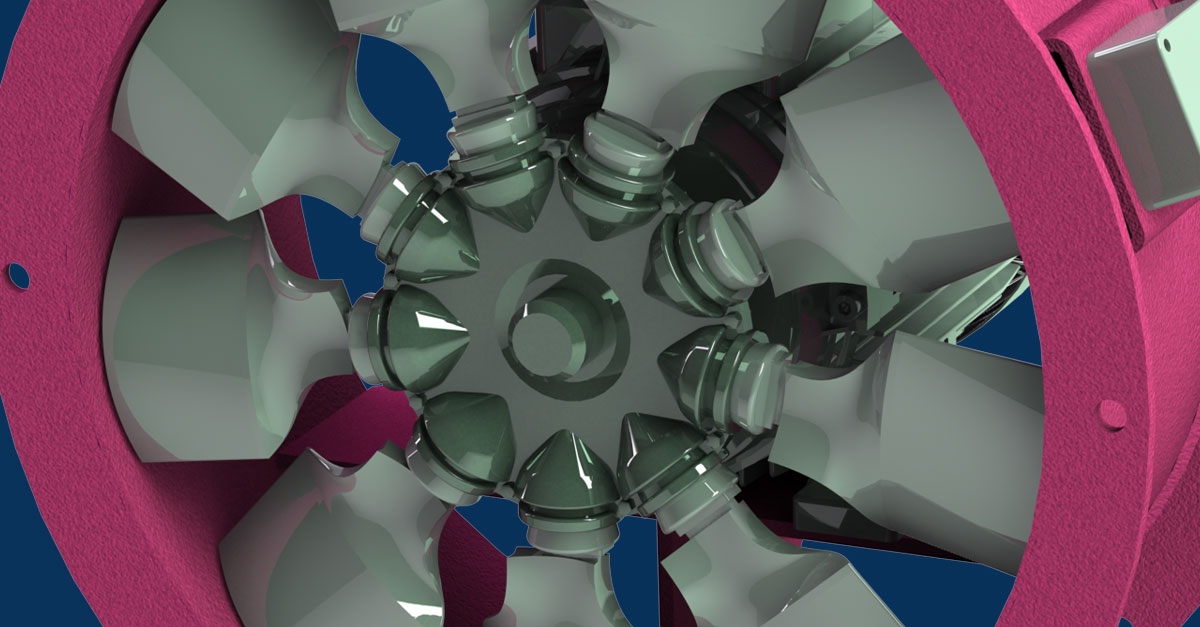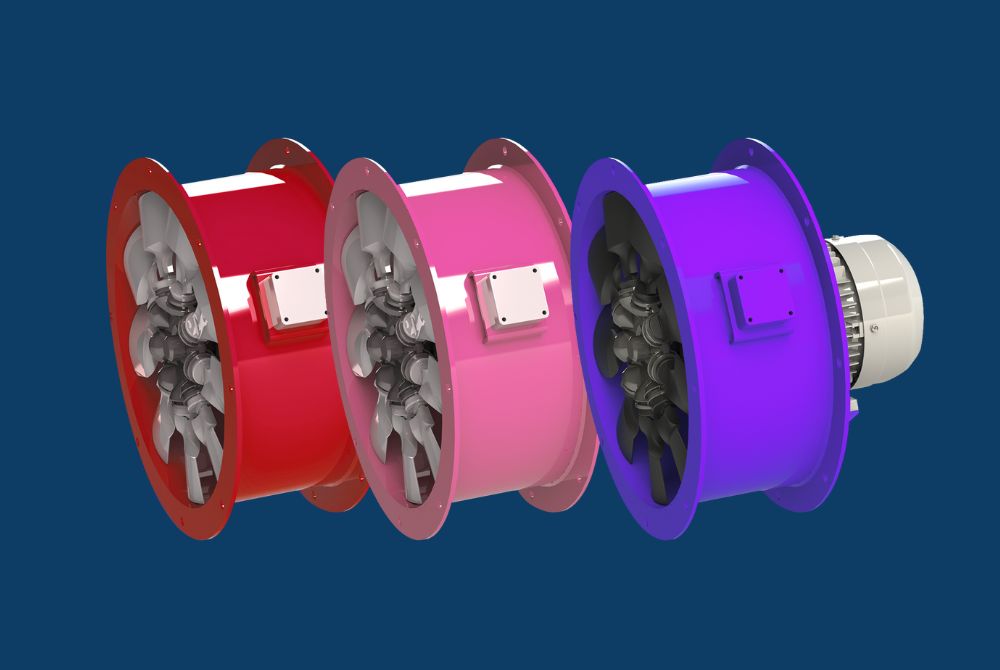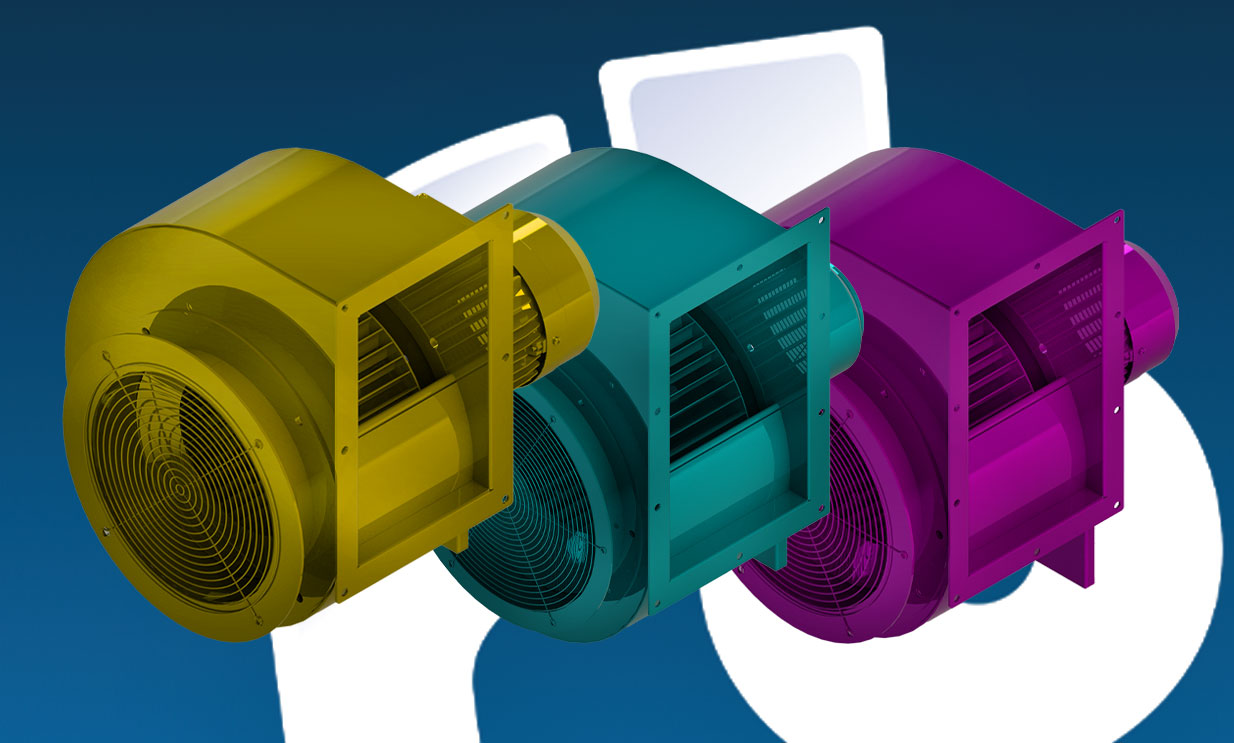
News
What is a Rotating Shaft on a fan? Applications and Benefits
17.06.2025
What Are Rotating Shaft Fans?
Rotating shaft fans refer to industrial fans where the impeller is driven by a central shaft, powered by either a direct-drive or belt-drive motor. These fans are the backbone of many high-demand airflow systems, from heavy-duty manufacturing plants to precision-controlled HVAC setups.
The rotating shaft is a fundamental component that transfers mechanical energy from the motor to the impeller, causing it to spin and move air efficiently.
Key Types of Rotating Shaft Fans
Direct-Drive Fans
- The fan’s impeller is mounted directly on the motor shaft.
- Benefits: Compact design, fewer moving parts, low maintenance.
- Best For: Clean air applications, small to mid-range volumes, lower pressure systems.
Belt-Drive Fans
- The shaft is powered by a motor connected via a belt and pulley system.
- Benefits: Flexibility in fan speed adjustment, better for high-volume or high-pressure applications.
- Best For: Industrial ventilation, dust extraction, and systems requiring performance tuning.
Benefits of Rotating Shaft Fans
- High Efficiency: Shaft-driven impellers offer optimal energy transfer with minimal slippage.
- Durability: With proper bearings and alignment, rotating shaft fans are long-lasting and ideal for continuous-duty operations.
- Custom Speed Control: Particularly with belt-driven units, shaft fans allow for speed adjustment to match airflow demand.
- Robust Construction: Typically built from heavy-gauge steel with industrial-grade bearings for demanding environments.
Where Are Rotating Shaft Fans Used?
Rotating shaft fans are found across a wide range of industries:
- Combustion Air Supply: Providing consistent airflow to support burners and incinerators.
- Spray Booth Extraction: Moving air and fumes efficiently in finishing or painting processes.
- Pneumatic Conveying: Transporting powders or granular material using high-pressure air.
- HVAC Systems: Integrated in air handling units for temperature and air quality control.
- Energy Recovery: Used in biomass plants or waste heat systems to support combustion and drying.
Key Components of Rotating Shaft Fan Assemblies
- Impeller: Engineered for volume or pressure, depending on system design.
- Motor: Either directly mounted or remotely located in belt-drive setups.
- Shaft Bearings: Heavy-duty bearings reduce vibration and wear.
- Casing (Volute): Designed to direct air efficiently from inlet to outlet.
- Base Frame: Supports motor and shaft alignment, especially in larger units.
Maintenance Considerations
Rotating shaft fans require routine inspections for:
- Shaft alignment
- Bearing lubrication
- Belt tension (for belt-driven models)
- Vibration levels
- Impeller wear or imbalance
Fans and Blowers provides support packages and spare parts for all rotating shaft models.
Essential to air systems
Rotating shaft fans are essential to modern industrial air systems. Whether you need compact direct-drive fans or adjustable belt-drive solutions, understanding how the rotating shaft impacts performance will help you choose the right system for your application. At Fans and Blowers, we manufacture and supply robust, UK-built rotating shaft fans tailored to your airflow, pressure, and durability needs.
Return To NewsKeep up to date with our
Latest News
-
Fans & Blowers Acquires B.O.B. Stevenson | Announcement
View more -
How Is the Centrifugal Blower Turned? Drive Types Explained
View more -
Types of Centrifugal Fans Explained | Industrial Fan Guide
View more -
Industrial Cooling Fans: How they work, Uses and Benefits
View more -
What is a Rotating Shaft on a fan? Applications and Benefits
View more -
Quiet Axial Fans | Low-Noise Industrial Fans with Silencers
View more -
Inlet & Outlet Fan Design | Improve Airflow and Efficiency
View more -
Expert Air Control Solution | Fans Built for Controlling Air
View more -
Fan Motors for Industrial Fans | Direct & Belt Drive Options
View more -
Fan Housing (Volute) Explained | Centrifugal Fan Efficiency
View more -
Fan Impeller Guide | Centrifugal Fan Impeller & Manufacturer
View more -
Compressed Air Safety with Industrial Fans and Blowers
View more -
How Does a Centrifugal Fan Work? | Guide Explained Simply
View more -
What Are Axial Flow Fans? | Industrial Ventilation Explained
View more -
Are Centrifugal Fans Quieter? | Noise Comparison & Benefits
View more -
What Are Centrifugal Fans? | Industrial Fans & Blowers Guide
View more -
What is HVAC? Understanding what HVAC stands for
View more -
How Does an Axial Fan Work? | Learn About Their Functions
View more -
What is ATEX? ATEX Equipment and Explosive Atmospheres
View more -
New Job Vacancy: Welder/Fabricator – Join Our F&B Team!
View more -
Fans and Blowers partner with FBG Servicing for expert industrial fan servicing
View more -
Celebrating National Engineers Week at Fans and Blowers
View more -
Fans & Blowers Introduce Side Channel Blowers to the roster!
View more -
Josh Roddick joins the team as F&B Production Manager!
View more -
A Christmas Message from All of Us at Fans and Blowers
View more -
Fans and Blowers Achieves Recertification ISO 14001 ISO 9001
View more -
Fans and Blowers for Air Knife Systems: Powerful Solutions
View more -
Everything You Need to Know About Axial HVAC Fans
View more -
Silencers for Fans: Reduce your Industrial Noise Levels
View more -
Inlet Filters: Maintain Clean Airflow and Protect Equipment
View more -
New Fans and Blowers Shop Now Live
View more -
Meet Fans and Blowers’ New Apprentice: Finley Huggins!
View more -
ATEX Explosion Proof Fan: Safety in Hazardous Environments
View more -
Discover Our Latest Product: Multivane Forward Curved Fans
View more -
How to Make an Industrial Fan Quiet: Tips and Techniques
View more -
What’s the Difference Between a Radial Fan vs Axial fan
View more -
Learning the importance of Fans & Blowers Industrial Blowers
View more -
Unlocking Reliability and Effectiveness with Bifurcated Fans
View more -
Ensuring Efficiency: The Value of Dust & Fume Extraction
View more -
Exploring the Functions of Gas Booster and Exhauster Fans
View more -
Unleashing the Potential of Axial Fans: Endless Applications
View more -
What are Axial Fans used for?
View more -
Our Fume Extract Fans are Clearing the Air of Hazardous Fumes
View more -
Unveiling ATEX Fans’ Vital Role in Hazardous Environments
View more -
How much electricity does an industrial fan use?
View more -
What is a Centrifugal Blower?
View more -
What is an Axial Fan?
View more -
What is a Centrifugal Fan used for?
View more -
New Vacancy: Welder/Fabricator
View more -
Axial Fans vs Centrifugal Fans
View more -
The advantages of Axial Fans
View more -
Industries that our industrial Fans and Blowers excel in
View more -
Celebrating 50 years of manufacturing
View more -
Introducing a world leading axial fan range
View more -
Centrifugal specialists
View more -
Laser cutting services
View more -
New digital media for 2022
View more -
On-site service and maintenance
View more -
On-site nitrogen production plant
View more -
Meet our new engineering Graduate
View more -
New factory signage
View more -
A fresh new look for our website
View more -
Duncan Celebrates 25 Years at Fans and Blowers
View more -
Weatherproof Acoustic Enclosure to meet noise restrictions
View more -
Fresh Look for the Flat Bed
View more -
BSZ Fans On Their Way To Europe
View more
PRODUCTS WITH EXCEPTIONAL PERFORMANCE
Our Range


Shop Fans
Shop our range of Multi-Vane FansWorldwide shipping
International standards
High performance


